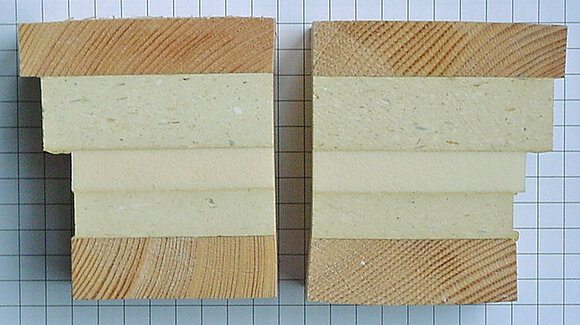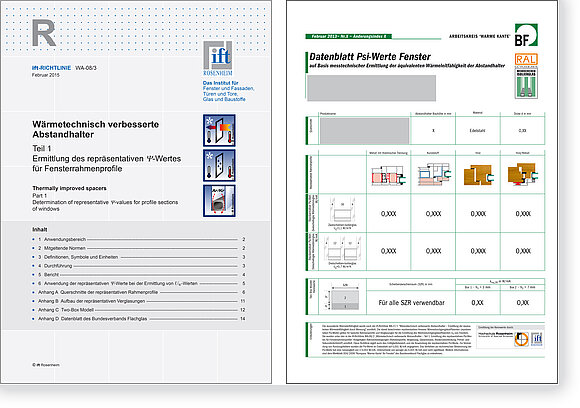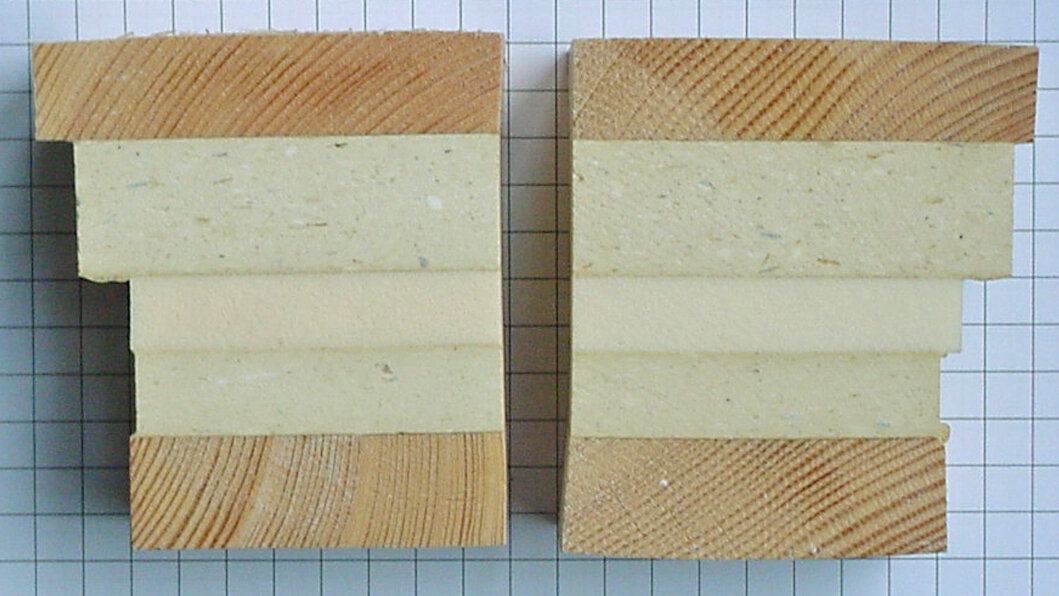Reading time: 1 minute
The first oil crisis in 1973 is the cause for the Thermal Insulation Ordinance 95 [1], which was replaced by the first Energy Saving Regulations EnEV 2002 [2].
Highly thermal insulating window constructions
Current situation around 2000
The first oil crisis in 1973 is the cause for the Thermal Insulation Ordinance 95 [1], which was replaced by the first Energy Saving Regulations EnEV 2002 [2].
The measurements of the thermal properties of frames, glasses and windows are replaced by calculations. European regulations replace the German standards for the determination of the thermal transmittance. The U value replaces the k value. Simultaneously to the introduction of the Energy Conservation Regulation 2002, the frame material groups were replaced by detailed Uf values in the revision of DIN 4108-4 [3].
In the middle of the 90s, the Passive House Institute in Darmstadt developed the standard of the passive house, which pushed the development of highly thermal insulating window constructions. These consist of insulting frame profiles and triple thermal insulation glass with thermally improved spacers with increased glazing depth.
Research project highly thermal insulating window systems [4]
Highly thermal insulating window systems are increasingly used in low-energy and passive houses. Especially PU is being used as frame material in addition to wood and uPVC. For windows, a thermal transmittance of clearly less than 1 W/(m2 K) is possible in combination with triple insulating glass units.
Due to the improved insulation of glass and frame, less-noticed thermal bridges appear more clearly. They do not only lead to increased heat losses, but also to condensation at high insulated constructions.
The following thermally critical areas of high insulated window constructions should be assessed, whereby the serviceability of the windows was in focus:
● Edge-sealing of insulating glass units: Use of thermally improved edge spacer;
● Edge-sealing of insulating glass units: Increased glazing depth in window frame; bearing on serviceability;
● Connection to supporting structure: Today’s valuation rules for the conductivity as well as the installation guidelines are only limitedly applicable for new window constructions and high insulated wall structures.
Results of Research Project
Thermal analysis
The UW value was determined by calculation and measurement. The calculation is generally on the safe side. Even if the numerical calculations of the frame profiles by different “calculating bodies” (PHI and ift Rosenheim) supply a good agreement, many things have to be defined more precisely. The determination of the entrance parameters for the numerical calculation is difficult. Even then, a replacement model was proposed for the determination of the Psi values.
Lower glazing depth
The studies show that the thermally induced stresses, due to a lower glazing depth in combination with highly thermal insulating frame, do not lead to a significantly enhanced risk of glass breakage than a “normal” glazing depth of approx. 15 mm.
Serviceability
Various studies on wooden insulating material window scantlings and on the uPVC window system allow statements regarding the serviceability of windows at real life situations.
In principal, the window systems can be classified as serviceable. Nevertheless, a few areas require an optimisation to permanently minimize a restriction of the serviceability.


Further development
Up to the 90s, simplified pragmatic concepts were enough (use of frame material groups). However, the European calculation standards intensify the U value Olympics to the turn of the millennium. The determation of the U value of frame profiles by numerical simulation is made possible by EN ISO 10077-2 [5]. While in Europe only few bodies could determine the U value (and/or k value), the number of “malingerers” increased rapidely due to the partially free availability of software for calculation of thermal properties of windows. There were significant divergences in the results.
In cooperation with the working group warm edge of Bundesverband Flachglas (Federal Flat Glass Association), several research projects for the determination of the linear thermal transmittance Psi were implemented [6, 7, 8]. Aim was the determination of Psi values for a “fair” comparison of performance characteristics. On the other hand, calculation and application rules should enable an usability of the calculated Psi values for a wide product range. Finally, several ift-Guidelines resulted out of it that allow the determination of representative Psi values for windows as well as facades [9, 10, 11]. The values are published in the related data sheets of Bundesverband Flachglas (Federal Flat Glass Association).
Current situation
In Germany, triple thermal insulation glasses are gaining more and more acceptance. In 2015, the share of triple glass was almost 60% [12]. The use of thermally improved spacers was also established with a quota of slightly more than 60% in the total market in 2015.
For a long time, the thermally improved profile sections of windows enable total U values of well less than 1.0 W/(m2 K). However, the energy efficiency of a window is not only limited to the mere heat losses, expressed by the U value, but is determined by the balancing of heat losses (conductivity U and airtightness) and heat gains (g value). This is also shown in a studie of the European commission within the analyses for the Ecodesign Directive.
Reminder: An identical balancing characteristics, the so called equivalent k value existed in the Thermal Insulation Ordinance - an useful characteristic that was not able to enter the Energy Saving Regulations.
In addition to the presentation of the energy efficiency in balancing characteristics, the introduction of an energy label for windows was also widely discussed. Voluntary national label were popping up like mushrooms. In 2015, there were at least 13 different systems. An unification would be reasonable according to the motto “One Test for Europe”. Therefore, ift Rosenheim has prepared a proposal for a free label: www.ift-rosenheim.de/en/ift-energy-label
Besides the energy efficiency for winter (in heating mode), sommer (in cooling mode) is also displayed on the label. This is essential for an European approach as the energy consumption for cooling of buildings can be much higher than for heating, especially in Southern Europe.
New issues occur due to rise of energy efficiency of windows as well as other components of the building envelope. Bricks with highly thermal insulating properties were developed to reduce the transmission heat transfers through outer walls. The reduction of the thermal conductivity of the bricks was made for one thing by increasing the hole numbers, lower profile thickness and lower bulk density; on the other hand, the thermal conductivity was reduced by filling of the perforation with insulating materials. At the same time, the requirements of windows increases regarding thermal insulation, safety technology and building acoustics. The fixation of windows and window doors in highly thermal insulating bricks is becoming increasingly difficult due to simultaneously reducing of mechanical resistance of the bricks. ift Rosenheim currently performs two research projects to this [13, 14].

Summary
The reduction of energy consumption has a lasting effect on the development of windows. New techniques have grown dynamically from the origins to the triple glazing and improved frame profiles of today. Regulations of the legislative authorities have built up an appropriate pressure. It is too short-sighted to purely consider the U value. The multifuncional window should not only be assessed by its energy gains and losses, but has to be put into context with the building, the service engineering and the total energy management.
Literature
- Regulation of energy-saving thermal insulation at buildings (Thermal Insulation Ordinance) dated 16.08.1994
- Regulation of energy-saving thermal insulation and energy-saving plant engineering at buildings (Energy Saving Regulations - EnEV) dated 16.11.2001
- DIN V 4108-4:2002
Thermal insulation and energy economy in buildings - Part 4: Hygrothermal design values
Beuth Verlag GmbH - Häusler, T.; Pfluger, R.; Sack, N.:
Highly thermal insulating window systems. Examinations and optimisations in built-in condition (HIWIN).
Subproject A: Thermal examinations
Annex to partial report A: Building-physical examinations and optimisation of structure connection
Subproject B: Examinations of risk of glass breakage due to increased glazing depth
Subproject C: Examinations of general serviceability
ift Rosenheim, 2003 - EN ISO 10077-2
Thermal performance of windows, doors and shutters - Calculation of thermal transmittance - Part 2: Numerical method for frames
Beuth Verlag GmbH - Research project Warm Edge, final report
ift Rosenheim, July 1999 - Psi value window - quality criteria for the calculation of the linear thermal transmittance Ψ (Psi value) of the transition frame-glazing edge-glass and comparison with experimental data
German Institute for Building Technology DIBt, Berlin, April 2003
Publisher Fraunhofer IRB, 2003, ISBN 3-8167-6526-2 - Determination of the equivalent thermal conductivity of thermally improved spacers
Research report of ift Rosenheim, December 2012, ISBN 978-3-86791-339-3 - ift-Guideline WA-08/3
Thermally improved spacers - Part 1 - Determination of representative Y-values for profile sections of windows
ift Rosenheim, ISBN 978-3-38791-371-3 - ift-Guideline WA-17/1
Thermally improved spacers - Part 2 - Determination of the equivalent thermal conductivity by means of measurement
ift Rosenheim, ISBN 978-3-38791-324-9 - ift-Guideline WA-22/2
Thermally improved spacers - Part 3 - Determining the representative Y-values of facade profiles
ift Rosenheim, ISBN 978-3-86791-398-0 - Flat glass market Germany
Production/Import/Export/Sales 2013-2015 – Forecast 2016
Bundesverband Flachglas (Federal Flat Glass Association) - Preparation of guideline for fixation of windows in highly thermal insulating masonry
Funded by Forschungsinitiative Zukunft Bau; reference SWD 10.08.18.7-13.27
ift Rosenheim - Burglar resistance with highly thermal insulating brickwork - Analysis of actual state, development of design criteria as well as performance criteria
Funded by Forschungsinitiative Zukunft Bau; reference SWD 10.08.18.7-16.14
ift Rosenheim



